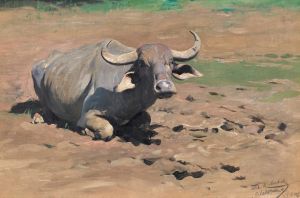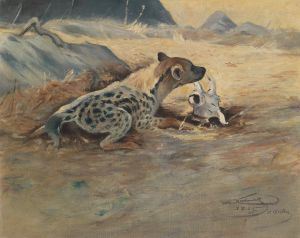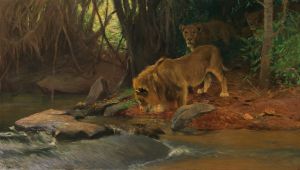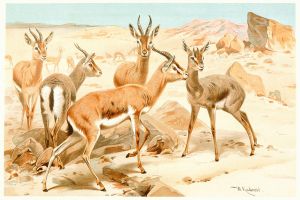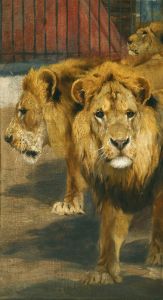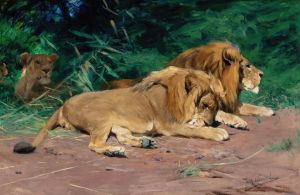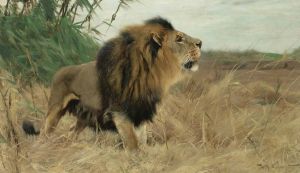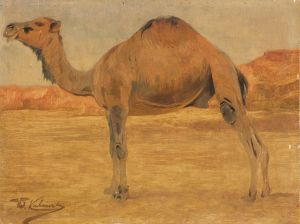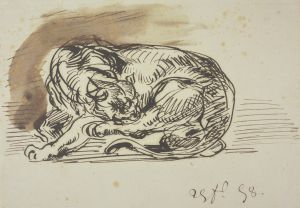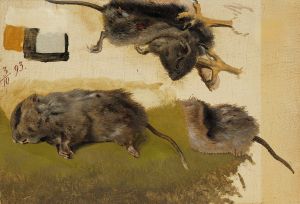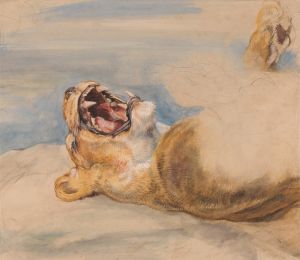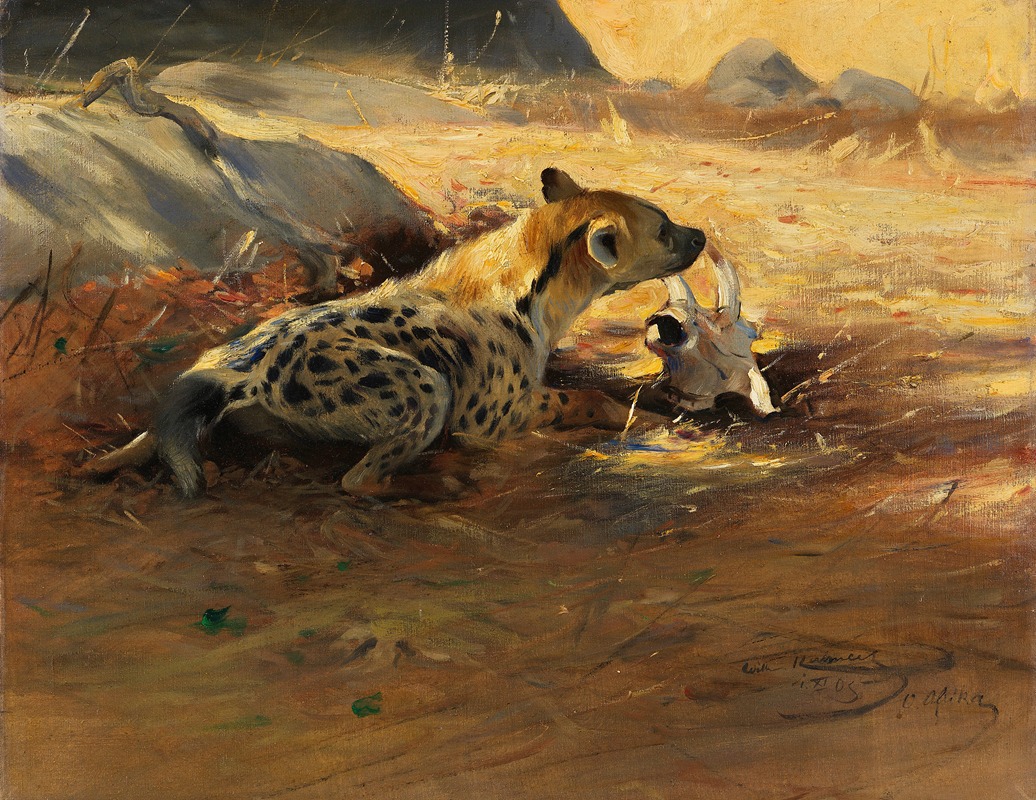
Hyäne
A hand-painted replica of Wilhelm Kuhnert’s masterpiece Hyäne, meticulously crafted by professional artists to capture the true essence of the original. Each piece is created with museum-quality canvas and rare mineral pigments, carefully painted by experienced artists with delicate brushstrokes and rich, layered colors to perfectly recreate the texture of the original artwork. Unlike machine-printed reproductions, this hand-painted version brings the painting to life, infused with the artist’s emotions and skill in every stroke. Whether for personal collection or home decoration, it instantly elevates the artistic atmosphere of any space.
Wilhelm Kuhnert (1865–1926) was a renowned German painter and illustrator, best known for his detailed and realistic depictions of wildlife. His work primarily focused on African animals, which he studied extensively during his travels to the continent. Kuhnert's paintings are celebrated for their accuracy and attention to detail, capturing the essence of the animals and their natural habitats.
One of Kuhnert's notable works is "Hyäne," a painting that exemplifies his skill in portraying wildlife. While specific details about the painting "Hyäne" are limited, it is consistent with Kuhnert's broader body of work, which often featured African wildlife in their natural settings. Kuhnert's paintings were not merely artistic endeavors; they were also valuable contributions to the study of zoology and natural history, as they provided a visual record of species and environments that were less familiar to European audiences at the time.
Kuhnert's interest in wildlife was sparked during his early years, and he pursued formal education in art at the Berlin University of the Arts. His passion for animals led him to travel to Africa multiple times, where he spent extended periods observing and sketching animals in the wild. These expeditions were crucial to his artistic process, allowing him to capture the nuances of animal behavior and anatomy with remarkable precision.
The painting "Hyäne" likely reflects Kuhnert's commitment to realism and his ability to convey the character and presence of the hyena, an animal often misunderstood and underappreciated. Hyenas, known for their distinctive vocalizations and complex social structures, were a subject of fascination for Kuhnert, who sought to portray them with the same dignity and respect as more traditionally admired animals like lions and elephants.
Kuhnert's work, including "Hyäne," played a significant role in shaping public perceptions of African wildlife during the late 19th and early 20th centuries. His paintings were exhibited widely and were instrumental in popularizing the genre of wildlife art. Kuhnert's legacy continues to influence artists and naturalists, and his paintings remain highly regarded for their artistic and scientific value.
In addition to his paintings, Kuhnert also contributed illustrations to various publications, further disseminating his observations and artistic interpretations of wildlife. His work appeared in books and magazines, reaching a broad audience and enhancing public appreciation for the natural world.
Overall, Wilhelm Kuhnert's "Hyäne" is a testament to his dedication to wildlife art and his ability to bring the beauty and complexity of the natural world to life on canvas. His paintings continue to be celebrated for their contribution to both art and science, offering a window into the rich biodiversity of Africa and the skill of an artist who was deeply committed to his craft.





